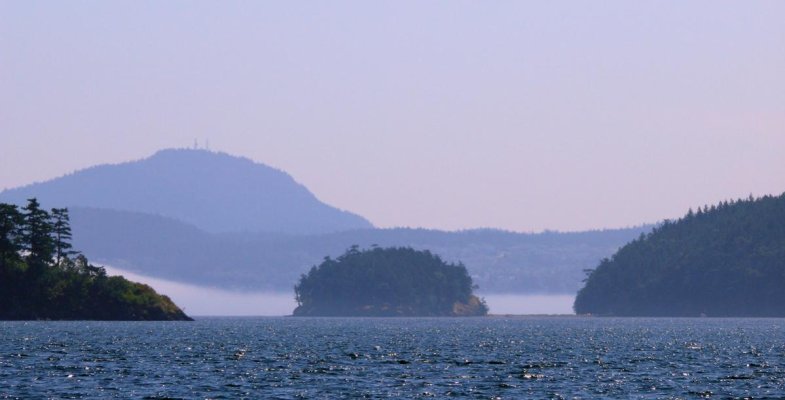The owner of the marine electronics shop in Bellingham had this to say when I asked him about the potential effects of radar emissions. The power from a modern recreational-type radar (Furuno, etc.) is so weak that the only way you could cause any negative effect on yourself is to put the radar in transmit and hold your head against the side of the radome for a week. Then..... maybe.... there might be some very slight effect on you.
However, he went on to say, better safe than sorry mount the radar antenna where people won't be in the path of the transmissions. In our case, the radome is well above the heads of anyone on deck or in the cabin. However as a practice we don't let people go up to the flying bridge if the radar is going to be transmitting, or if it's nice and people want to go up there we don't use the radar. We don't operate the boat from the flying bridge so the antenna's position is not a factor in actually operating the boat.
There are a couple of advantages to our lower antenna position so we have not been motivated to move it, plus the installation of both the antenna and the display on its retractable mount in the main cabin overhead are first rate and in the case of the display unit is very user-friendly. However if someone was contemplating adding a radar to a boat that didn't have it I would never recommend a flying-bridge-face location for the antenna.
Flying bridge face mounts were common in the "old days" when masts tended to be solid wood and the cable to the antenna was relatively huge. The flying bridge face was a good place to put the antenna and accommodating the thick, heavy cable was easy. That's why you tend to see these mounts on older boats only.
PS-- With regards to the issue of having a radar on all the time or not, the interpretation of the rule as explained to us by USCG officers a number of years ago is--- Use it if you think you need it. If you have a collision and you were not using your radar you will most likely be found to bear at least some of the responsibility, but the rule does not require you to have it on if you have it. It's totally your judgement call.
That said, we have our radar on all the time we are running. Not because we need it but by having it operating even in great visibility we are constantly seeing what vessels and navaids look like on the screen and can play with the range and bearing indicators if we want to. So we are very used to using it so on those occasions when we might come around a point and run right into patch of heavy, localized fog our transition to "instruments' is seamless and easy.






